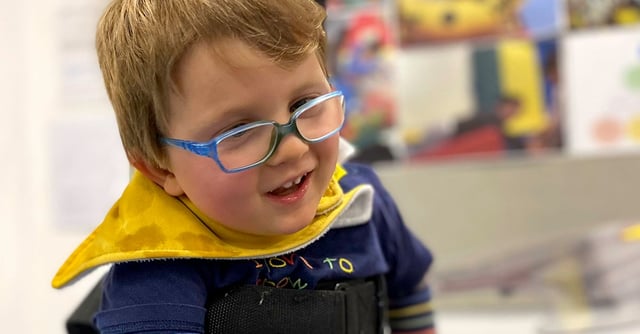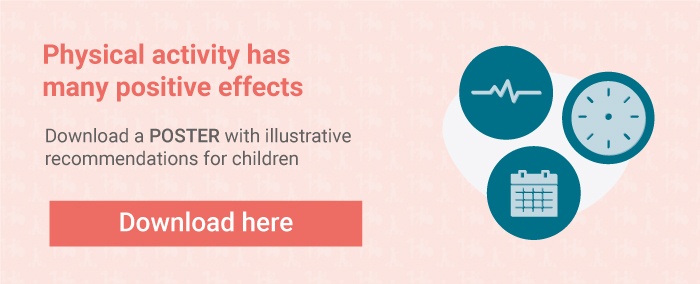
May 31, 2023Implementing the use of Innowalk Pro in a special school setting

Back to Blog Overview
The results from the HEROIC study, have created an evidence based guide on how to implement the Innowalk Pro in a special school setting in the United Kingdom. It has also had great impact on the the schools culture and implementation of ‘Move more, Sit less’ improvement plan.
In this article you can learn more about:
- What was the aim of the HEROIC trial?
- The impact of the HEROIC trial results
- How has the Innowalk PRO been used in school following the study?
- Improved access to physical activity results in better educational outcomes
What was the aim of the HEROIC trial?
The HEROIC trial examined the effects of using the Innowalk Pro in a special school setting as an adjunct to usual physiotherapy care. Outcomes measured included: Quality of life, Range of motion and Spasticity of the lower limbs and Functional Goals (GAS) for students with cerebral palsy. You can read a full summary of the article and access the results of the study here.
The HEROIC trial is the first of its kind, setting the foundations and establishing a clear need for further research, not only for people with cerebral palsy but other neurological conditions as well.
Conducting a highly reliable and valid research study is no easy feat. However, the results provided by the HEROIC trial have created an evidence-based guide on how to implement the Innowalk PRO within a school setting and ensure a significant impact on quality of life and functional student-centred goals.
What were the most important and relevant outcomes of the study?
The remarkable findings on improvements to quality of life and functional goals were the most important and relevant to the school. These outcomes have the most meaningful impact on the students, the staff and their families.
What was most surprising for the therapy team at the school was the statistically significant improvements achieved by the secondary school students in their functional goal attainment. Clare Grodon, the lead physiotherapist explains ‘Within primary, you can influence more, you see change on a more global scale and the Innowalk Pro is a stepping stone, however, in secondary, it is the ultimate reason they achieved those changes. Physiotherapy and home exercise programmes can’t replicate that on their own ‘
With regular robotic rehabilitation training using the Innowalk PRO, 80% of the students in the trial were able to achieve and surpass expectations set within their functional goals. These findings demonstrate hope for secondary students as they approach young adulthood, a time that is often focused on maintaining function, rather than improving or learning new skills.
Sustaining these achievements, as expected, requires ongoing access to Innowalk PRO and the movement it provides. The students at Richard Cloudsley School understand this better than most and now are in pursuit of obtaining funds for another Innowalk PRO Large for the secondary school site.

How has the Innowalk PRO been used in school following the study?
The team at Richard Cloudesley School have continued to use the Innowalk PRO across both primary and secondary school sites in alignment with the methodology of the study. Although the study only examined the effects on students with cerebral palsy, there are students with a variety of conditions who access the Innowalk PRO, including students with Rett Syndrome, Batten Disease, Traumatic brain injury to name a few. Clare Grodon, lead physiotherapist tells us ‘The Innowalk is a safe opportunity for the more complex students to enjoy and experience movement’.
The therapy team prioritise students that will benefit from a 6-week block of Innowalk therapy, and each student accesses it four times per week for 30 mins. Students who are due/post-surgery or Botox are also classified a priority. The Innowalk PRO is shared between classes and more often than not, will be used within the classroom setting during lessons to aid engagement and participation and prevent lesson disrupted. Following the 6 weeks block a different cohort of students are then given the opportunity to access the Innowalk PRO.
Improved access to physical activity results in better educational outcomes
In addition to the statistical findings of the study, teaching staff have identified that the Innowalk PRO can be used as a tool to help self-regulation for some of the students for short bursts first thing in the morning to facilitate participation and engagement within learning.
Since the study, the school has implemented a ‘Move more, Sit less’ improvement plan. Slowly but surely changing the culture throughout the whole school and implementing a real focus with tangible and measurable actions for this to be obtained and sustained long term.
To read more about other schools who use Innowalk PRO, please see our reference school page here.

Noell has a clinical background as a clinical physiotherapist, working for the NHS in Surrey, London and internationally in Singapore, before joining the Made for Movement team. As Business Development Manager her mission is to promote and encourage the journey for movement to be accessible for all. Noell enjoys finding creative and diverse collaborations that drive opportunity for movement as well as evidence-based research that demonstrate its importance and value within health and disability. Noell is passionate about advocating her experience in how life-changing movement can be for the individuals she has the privilege to work with and how it positively affects their quality of life.


